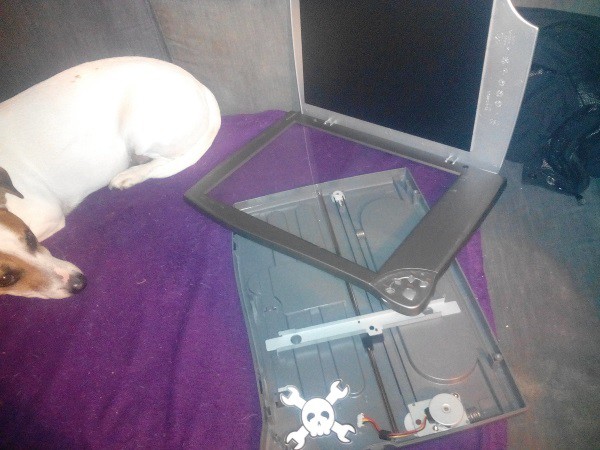-
Simplified Mechanism??
06/11/2015 at 20:30 • 0 commentsThis awfully rendered animation that demonstrates my simplified mechanism. So what i need to make is three boards with 4800 holes (apart from mounting) and 4800 pins made. Any ideas? :) I can reduce the design down to 20x12 6 dot characters and reduce the number to 1440, which I think is still a good size display.
-
Thoughts on Hackaday.com blog feedback
06/02/2015 at 11:20 • 0 commentsSo @Benchoff posted a well written article about the Braille computer and the matching keyboard, articulating my ideas much better than I could myself. After the initial panic of seeing such a messy and early version of my project being seen by people who's work I've been following for years, I started reading the feedback and its been really helpful. To clarify, my design has 60 servos placed along the x axis, which is pulled along the y axis by another servo, like a photocopier or desktop scanner in movement.
Here are some of the ideas and my thoughts on how I should progress.
I had planned of using SG90 Tower Pro servos as they are cheap and everyone uses them, until @Robert Guyser showed me these. They are camera lens motors, and some are just 6mm in diameter and light at less than $1 each. I wont have to worry about clumsy mechanisms in order to reach the dots.
Electromagnetic displays were mentioned, but i have no idea how to deal with cross chatter at such a fine pitch. Single line displays use a bulky servo array.
A few people mentioned the pin art toys (block of metal pins people in the 90s used to copy their faces) if the pins were ridged a system similar to a zip tie could hold them in place, with a global per line reset.
[Rob] suggested electric stimulation in place of dots, don't think i would like to use it during a thunderstorm :)
[W] posted this...
"If your goal is a simple/cheap output device, why not ignore Braille entirely? Since people can use a chorded keyboard for input, why not use a chorded output? Think of 8 pins/buttons in the same pattern as the chorded keyboard, each lifted by a solenoid. Use the exact same patterns that you type on the chorded keyboard with.
You'd need a rate control, but that could be handled by a foot pedal or something. I agree it's nowhere near as convenient to use compared to a printed braille page, but it should be an order of magnitude cheaper than a braille printer and therefore more widely accessible.
If you were mechanically super-clever, the output device could also act as the keyboard."
This last one is quite interesting. Beyond the scope of this project, but it has loads of potential for mobile.
Thank you to everyone who left feedback, it was all appreciated :)
-
Slow Progress is Progress
05/27/2015 at 21:11 • 0 commentsThe keyboard is coming along nicely (see #8-bit binary/hex/braille keyboard) and I finally found a flatbed scanner for my screen/enclosure. I have to design the actual Braille points in cad soon and use my shapeways credit. Because i seed thousands of small pieces (but only 4 different shapes) I am planning on getting a metal mould and trying my hand at injection moulding, but I will post on here before I go ahead.
Dog for scale
![]()
-
Keyboard module ready
05/06/2015 at 19:56 • 0 commentsJust breadboarded my keyboard module #8-bit binary/hex/braille keyboard so I now have a starting point for the physical interface.
Braille Computer
A low cost Raspberry Pi powered all in one Braille computer with a full page display.
 haydn jones
haydn jones